Posted by
Darrell Mordecai
Having worked in a small marketing agency, I’ve had the opportunity to work on many sites in many different industries. Seeing a site gaining traffic and eventually, organic conversions is a really rewarding experience.
However, there was one thing I never got to work on.
A brand new site.
When I finally got my hands on one I discovered…
It took ages to get any traction.
I discovered there are some concrete steps you can take that will set your site up for success.
Getting this right in the beginning, will substantially speed up your site’s progress and get you out of the sandbox as quickly as possible.
Let’s get started…
SEO Checklist for New Websites
The steps to getting your site off the ground can be broken up into three main categories:
- Carefully plan your site structure
- Create well-structured content that targets low competition keywords
- Build quality links
Now, before I get into the list, if you **** checklists you might find these useful:
1. Plan Your Site Structure
Planning your site’s structure is possibly the most important step in getting a new site off on the right foot.
What’s more, it should be done right in the beginning. Although you can possibly fix a bad site structure later on in the process if you have hundreds or even thousands of URLs the job might be enormous.
Also, getting this wrong could result in poor rankings.
Why is Site Architecture Important?
There are a number of reasons to have a solid site architecture.
Firstly, a clear and simple architecture helps spiders easily crawl your site. This will ensure that all of your pages are findable and indexable.
Google will have difficulty crawling:
- Pages that are many clicks away from your home page
- Pages that are not linked to by any other page
Also, having a clear site structure will result in many internal links pointing to your high-priority pages, which will signal to Google that these are important pages. This may boost their authority which could, in turn, improve their rankings.
Finally, the biggest reason to have a clear site architecture is it makes your site more user-friendly. Providing a good user experience within a clear structure will help users easily find whatever content they are looking for.
A great user experience could result in your readers turning into fans which should result in them coming back to your site again and again.
Now that we understand the benefits of site structure, let’s get into how to get started.
How to Set up Your Site Architecture for More Traffic
The key to effective site architecture is to create a hierarchy. In other words, your most important pages should be at the top of the hierarchy working your way down to the least most important.
Imagine your site structure in three tiers. The top tier should be your homepage. Under that should be separate pages for each of your services. If your business doesn’t have services, these top pages should be category pages.
In other words, if you run a digital marketing agency, the top of the hierarchy should be your home page.
The next level down should be all of your different services.
This could be:
- SEO
- Google Ads
- Social Media Marketing
- Email Marketing
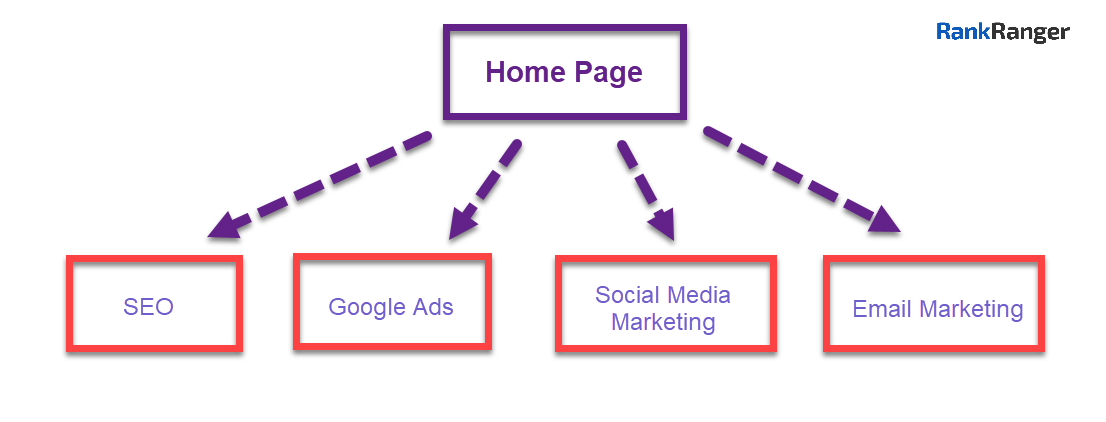
The next level down is your blog.
These tiers are achieved through the structure of your internal linking. In other words, all of your service pages should link back to your home page. All of your blog posts should link back to your service pages.
Once you have that in place, you should add a further layer of structure by creating content silos.
2. Create Content Silos
A content silo is a way to structure your blog. To set one up, you should plan to create blog posts explaining every aspect of your services or categories.
So in the example we saw above, the site had an SEO service page and a Google Ads service page. To create a content silo around SEO, you could create many blog posts covering different aspects of SEO.
Here are some potential blog topic ideas:
- How do you win SERP features?
- What are the most important Google ranking factors?
- What are the top five Search Engines?
Once you’ve written these posts, link them back to the SEO page.
You’d do the same for Google Ads, making sure to link back to your Google Ads page.
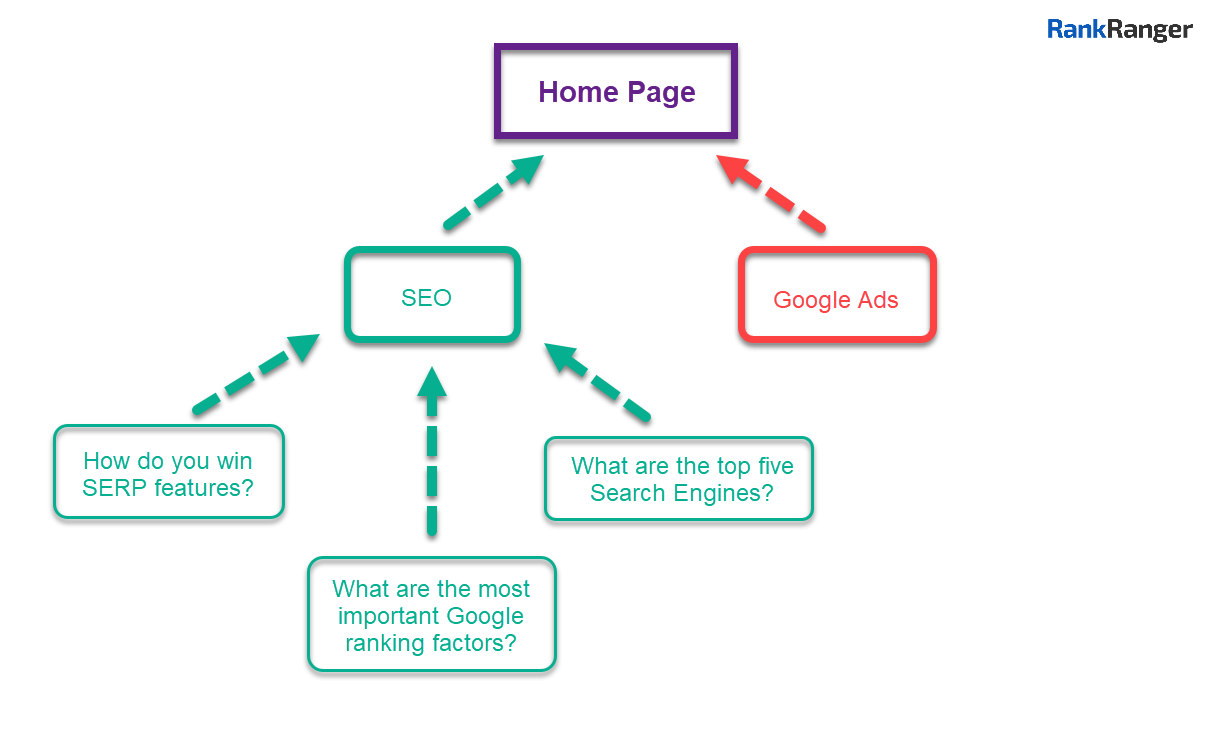
This will keep all of your SEO and Google Ads content separate.
Since Google will crawl your content by following your internal links, Google will see your expertise and competence in SEO which will increase your site’s authority on the topic.
Also, as the blog posts gain authority, the internal links pointing to the SEO service page will send authority to that page.
It’s important that your site have a shallow architecture. In other words, make sure that searchers can reach any content in four clicks or less.
3. Optimize Your Internal Links
By now you should understand that your site structure is based on how you internally link your pages. However, how the actual links themselves are structured is just as important as the site structure.
Let me explain.
What is Internal Linking?
Internal links are hyperlinks that point to pages on the same site. These links help Google find and index pages on your site. For instance, if you publish a page but don’t link to it from anywhere on your site and if it doesn’t appear in your site map Google simply doesn’t know that it exists. This is called an orphan page.
Build Authority With Internal Links
More importantly, internal links send authority to the pages the links are pointing to. This is because according to Google the number of links pointing to a page is a signal about the relative importance of that page.
Use Keyword Rich Anchor Text
Google uses anchor text to understand the page that the links are pointing to. This means, when building internal links you should use keyword-rich or exact match anchor text.
It’s important to note that when building backlinks this is not recommended. But when it comes to internal links, exact match anchor text won’t hurt your site. Instead, the anchor text will give Google context as to what the page is about.
Once you have your site structure and content strategy planned it’s time to create your actual content.
Just having a well-structured website is only the first step in your SEO strategy. The next step is to plan out your actual content based on keyword analysis.
4. Keyword Research
Now that you understand that your content should fit into your site structure, and your blog posts should be set out in a silo structure, it’s time to actually do some keyword research to figure out what blog topics to cover.
In order to do this research effectively, you’ll have to research each topic separately. In other words, as our example above, if you’re looking to boost your Google Ads service page, you should aim to create many blog posts that are designed to cover every aspect of the subject.
To do this could take years, and since many of the topics will have already been covered by high authority websites, you’ll have to initially look for low competition keywords. Once you start ranking for these low competition keywords and seeing a small trickle of traffic, you can start to target keywords that are slightly more competitive.
Enough theorizing, let me show you how…
How to Target Low Competition Keywords
I’ll be showing you how I find low competition keywords using the Rank Ranger Keyword Research suite.
When starting my keyword research, I don’t look for granular keywords. Instead, I type the broad topic into the search bar and rely on the tool to generate keyword lists. This will help me find all of the granular data I need.
As you can see in the screenshot below, I typed ‘Google Ads’ into the search bar. I then go to the Questions tab and click ‘View all’.
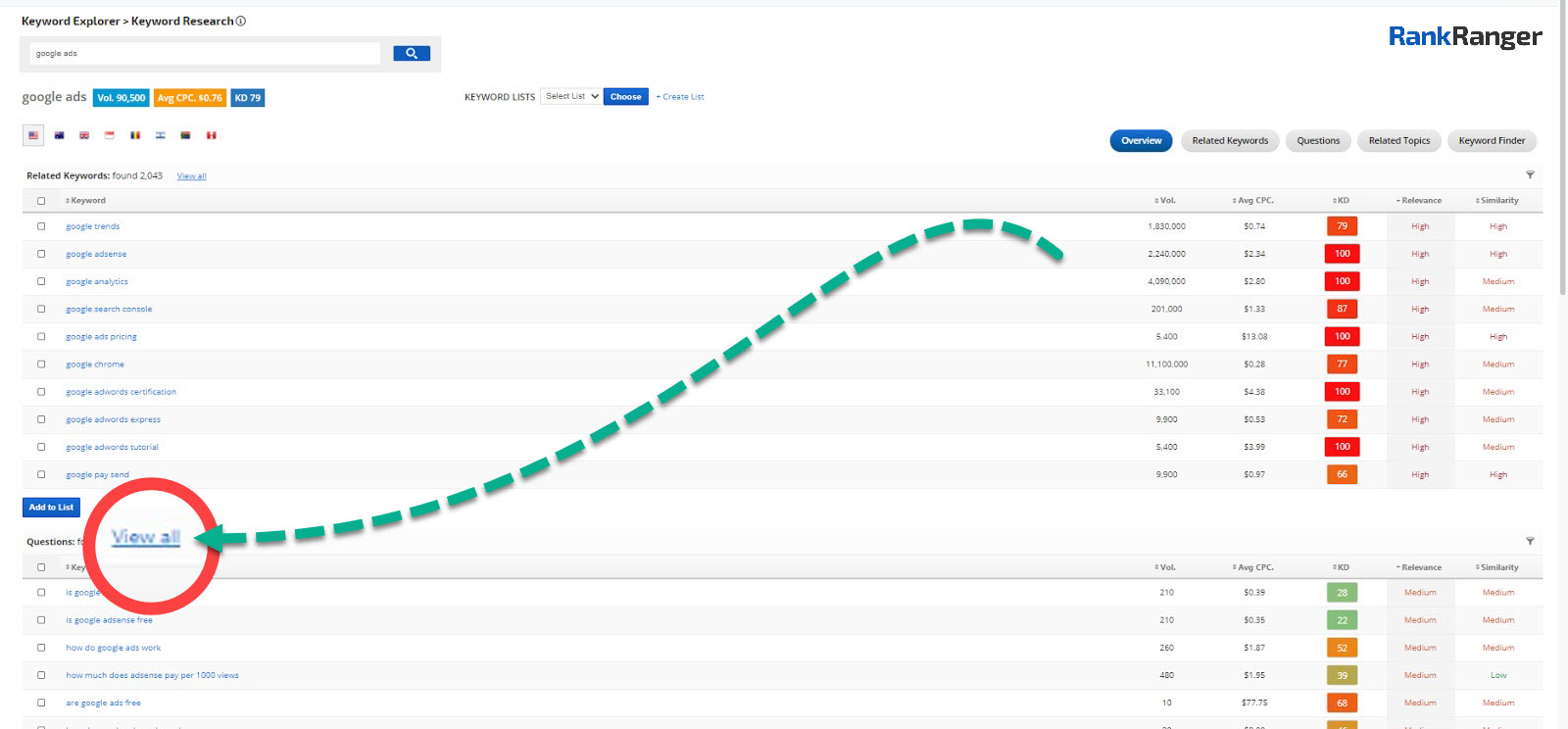
This will show you a list of 912 keywords.
Next, I scroll to the bottom of the page and click ‘Show’ and select 1000 in the dropdown menu. This will ensure that all of the keywords are showing on one page.
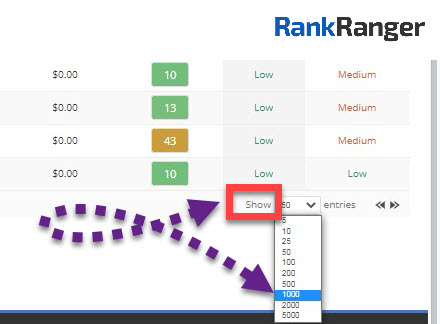
Next click ‘KD’ (Keyword Difficulty) at the top of the page. This will order all of the keywords from the lowest competition to the highest.
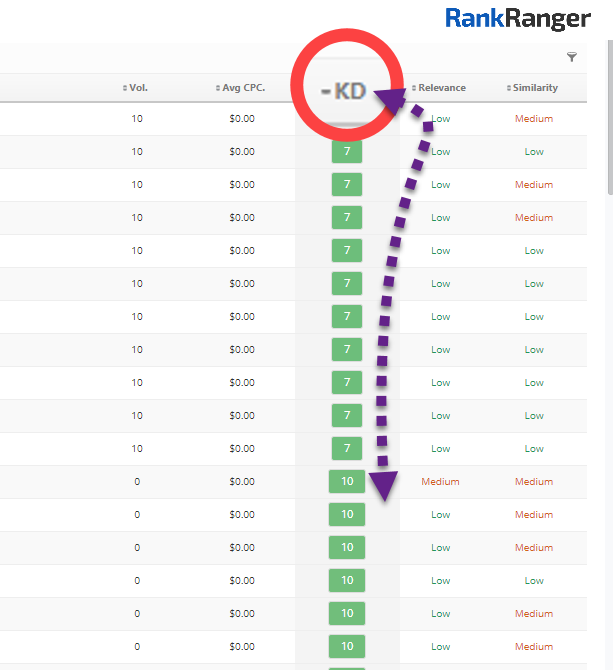
Finally, I look for keywords that have some search volume. To do this, click the filter icon and add a minimum search volume. This will show you some long-tail queries that Google users are searching Google that are less competitive.
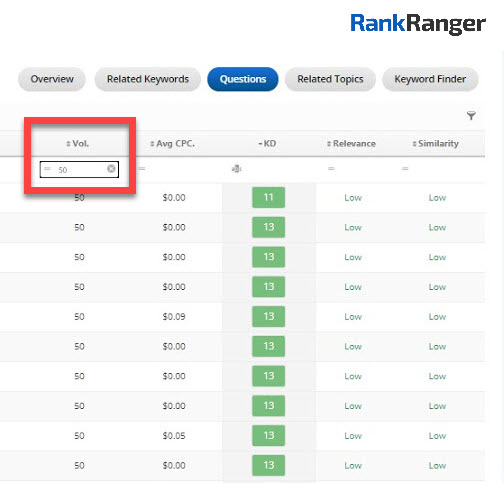
It’s important to note that you shouldn’t realistically expect keywords with high search volumes. However, if you cover many topics with low search volumes, the clicks will start to add up.
Once your site gets some momentum, you will be able to go after high-volume searches. At this point, you are trying to get your first traffic.
5. Optimize your Headings
It’s important to understand that people who read your blog posts often skim them in order to find a point of interest. To help them do that you should have clear headers (H2, H3, etc.) that explain what the content in each section is about.
This means keep your headers descriptive.
Ideally, I try to use keywords in my headers. To do this, simply go back to the keyword research tool, type your blog topic into the search, and go to the Questions tab. This will show you a list of keywords structured in the form of questions that can be used as headers.
For headers, don’t worry about search volumes or Keyword Difficulty scores. Instead, look for questions that people are searching Google for that make sense to be answered by your blog post.
6. Page Title and Meta Descriptions
This may seem like old-school SEO, but it’s still really important to write good metadata.
Since you used a keyword research tool to generate your blog topic ideas, you should include this keyword in your title tag.
This is important for two reasons:
- Keyword-rich title tags help Google ‘understand’ what your page is about.
- Keywords in title tags help improve your CTRs as users assume they have found what they are looking for.
You should also include this keyword in your meta description.
Although meta descriptions are not a ranking factor and Google often creates one for you, taking a minute to include your primary keyword in your meta description will show the user that your content answers their question. This could improve your click-through rates.
7. Optimize Your Images
Although it might seem obvious, you must include images and if possible video. This can substantially improve your user experience and help keep your audience engaged.
Image File Sizes
Images should make the whole page look better and strengthen the text information. Also, make sure your images are unique and avoid using free stock images. Finally, don’t forget to include a descriptive image alt tag.
It’s important to make sure your images are high quality, however…
High-resolution images can substantially slow down your page speed. It’s therefore important to reduce the size of your images but only if the quality remains high.
The best way to do this is to compress your images but when doing this, you must make sure to set a level of compression that doesn’t compromise the image quality. This might take some experimentation.
If you have Adobe Photoshop, you can always use the ‘Save For Web’ option, which will automatically do this for you.
If you don’t have Photoshop you can always use a free tool such as Gimp or Paint.
Image File Names
When choosing names for your images, use titles that describe your images. Also, include keywords to increase your chances of having your images found in searches.
Use Alt Tags
Alt text was designed so that blind people can understand what your image is about. However, search engines crawl your alt text so try to add more detail than what you’ve included in your image title.
8. Boost Engagement With Video Content
A great way to improve your SEO is to include video content on your site. The reason is statistics show that pages with video are more likely to attract links and get more engagement.
This means you should include video on your pages wherever it makes sense.
It’s important, however, to only include video content that will enhance the pages it appears on. In other words, if you have an informational blog post targeting the term ‘How to win SERP features’, include a video on the same page offering information about the same topic.
The reason is many of your visitors would prefer video over written content. Even if they don’t, it’s highly likely that they will still watch the video. Especially if your video promises additional value that is not included in the written content.

9. Scripts and Tracking
Set up your tracking and analytics right at the beginning. This means at least setting up Google Analytics and Google Search Console. If you are thinking about paid ads you might need a Facebook pixel or a Google Ads G-tag.
Even though there is almost no traffic going to your site at the moment, analytics is not something you should leave until later. The reason is the more data you have about your site, the more insights you will potentially have.
Good data will tell you if the things you’re doing are making an impact.
Once set up you can use your Google Search Console for many things, such as spotting technical errors, monitoring your rankings, submitting your sitemaps, and way more. You can even use Search Console to improve your ranking strategy.
10. Use Haro For Link Building
One of the most difficult aspects of SEO is link building. The reason is it requires creating content that people want to link to and then building relationships with site owners that are likely to link to that content.
When you’re just starting out, getting your first links can be really tough. No one wants to link out to a brand new site. This can be easily solved by signing up for a HARO account (Help a Reporter Out). HARO is a site that connects journalists with sources.
After trying HARO I’ve found it is a fairly easy way to generate legitimate high-quality links from established websites.
The HARO concept is…
Reporters have to meet content deadlines. They often find themselves writing about topics that they are not experts in. To deal with this they go to HARO to look for those subject experts.
This means if you sign up you can establish yourself as a source. When you submit an answer to a journalist’s question, if they accept your answer, they will generally link back to your site.
To get started you’ll need to go to https://www.helpareporter.com/ and click the I’m a Source button. You can then sign up for an account that will allow you to respond to reporter’s requests.
Once you do this, you’ll receive a list of emails every day including lists of journalist’s requests for sources for articles they are writing.

Simply sort through the emails daily to find requests that you can legitimately answer.
When you find one, there will be a brief including:
- A short summary of the journalist’s requirements
- An email address
- A deadline
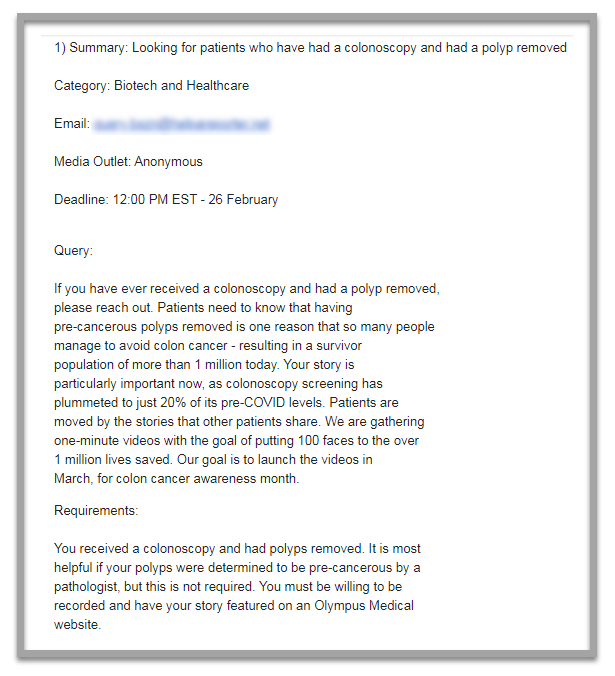
When answering a HARO request, make sure that you follow the brief exactly and answer long before the deadline. Also, don’t write a long essay. The reporter is generally looking for information often in the form of a quote. Since they are generally on a tight deadline, you should make the information easy to find.
The best way to do this is to write a few bullet points. Once you’ve done that, include a bio that qualifies that you are an expert and don’t forget to include where you want them to link to.
11. Create a Sitemap
Making sure your site is easily indexable in Google is a crucial first step in gaining organic traffic. Even though if you have followed the site structure section of this post, all of your pages should be crawlable, nonetheless, creating a site map will ensure that Google can find and crawl all of your pages.
Simply put, a sitemap is a list of different URLs on your site that search engines can crawl in order to find your pages.
Submit Your Sitemap to Google
This is really easy to do if you have already set up Google Search Console (see above).
In Search Console, go to the Sitemaps tab and simply enter your sitemap URL into the field, and hit the Submit button.
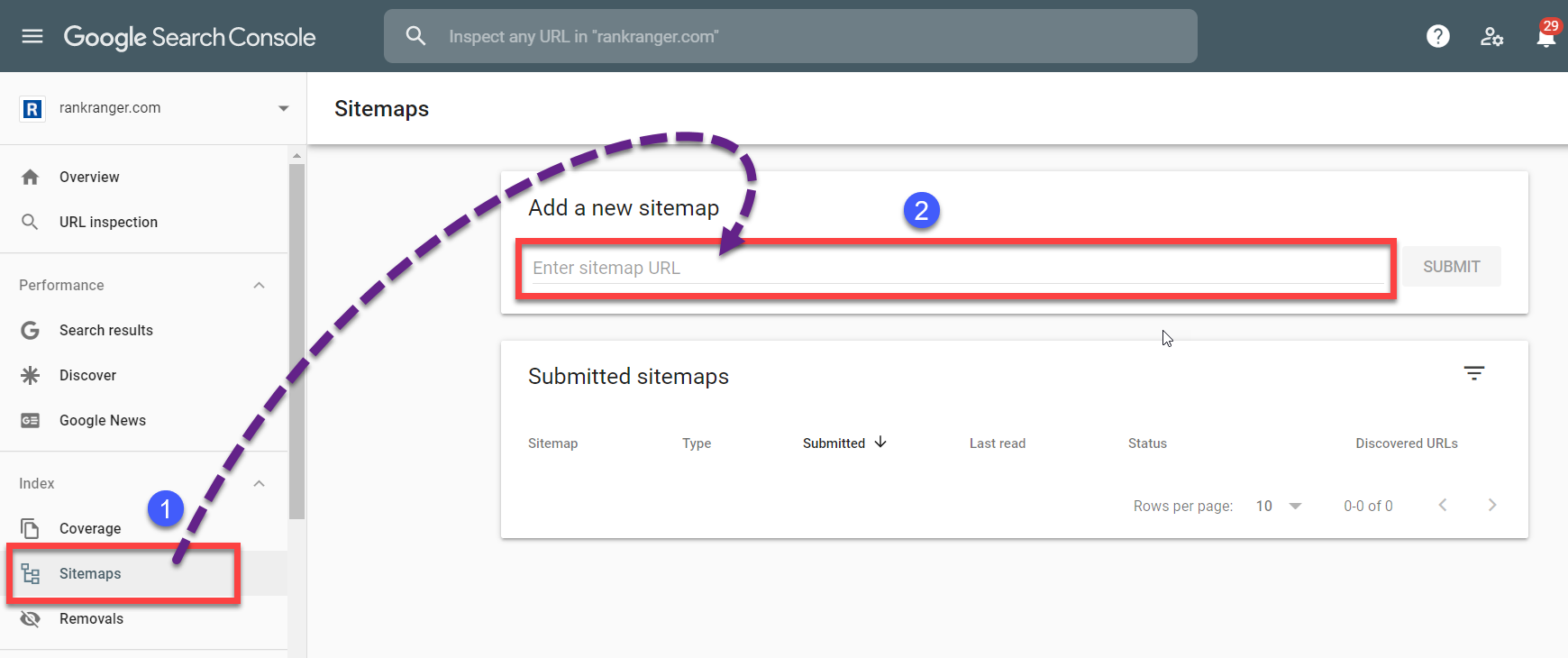
It’s as easy as that.
Now if you want to see small traffic wins as soon as possible, you should also submit your sitemap to Bing.
Index Your Site In Bing Webmaster Tools
After going after low competition keywords, indexing your site in Bing is one of the easiest ways to increase traffic. Since Bing’s algorithm works differently from Google, and because Bing is much less competitive than Google, you might find that content that never got any traffic in Google is suddenly getting Bing traffic.
This is incredibly easy to do. All you have to do is set up a Bing Webmaster Tools account.
Once you have that set up, simply click the Sitemaps tab and then click the Submit Sitemaps button.

When you do that, Bing Webmaster Tools will present a field where you can enter your sitemap URL.

12. Focus on Page Speed
Make sure your pages load fast.
Especially with Google focusing on Core Web Vitals. The reason is, page speed is directly related to user experience and Google is focusing more and more on user experience.
According to Trinity, 37% of visitors bounce when your site takes five seconds to load and a one-second delay results in a 7% drop in conversions.
Luckily, there are many great tools available to help you with your page speed, such as Google PageSpeed Insights, GT Metrix, and Pingdom Tools.
These tools are pretty easy to use.
For instance, if you go to the Google Pagespeeds Insights tool you will see a field where you can enter the URL you want to test.
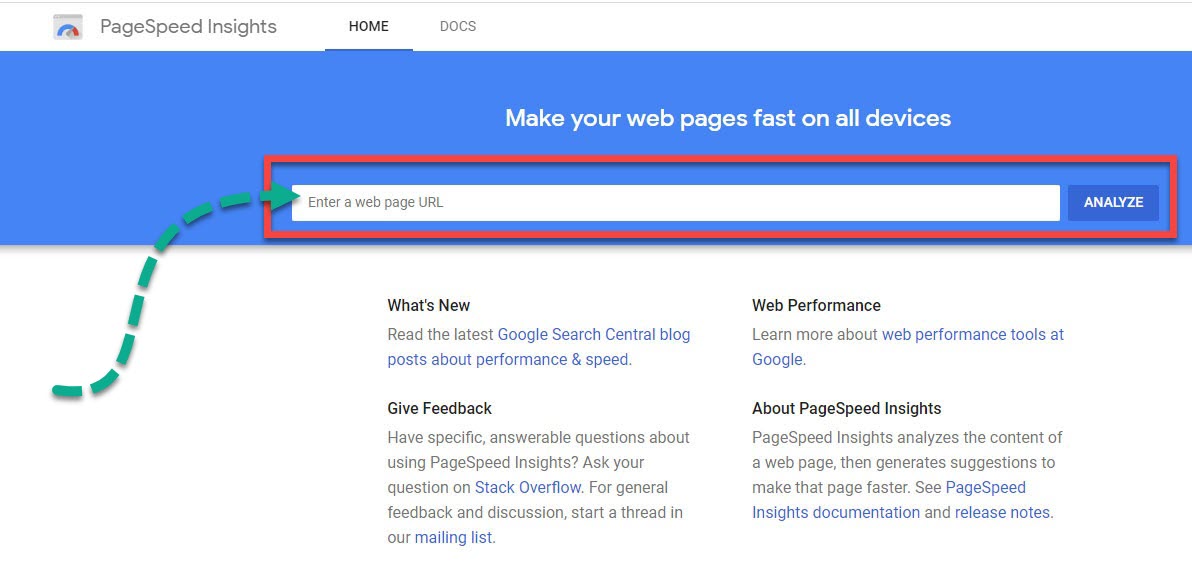
Once you’ve entered the URL, press the Analyze button and wait a few seconds. Once the tool is done, it will give you an overall score out of a hundred.
It will also let you know if the page passes a Core Web Vitals assessment.
Below that, it will break down your page speed into different metrics so that you can easily see what is slowing it down.
Once you’ve seen these metrics, scroll down to the Opportunities section.
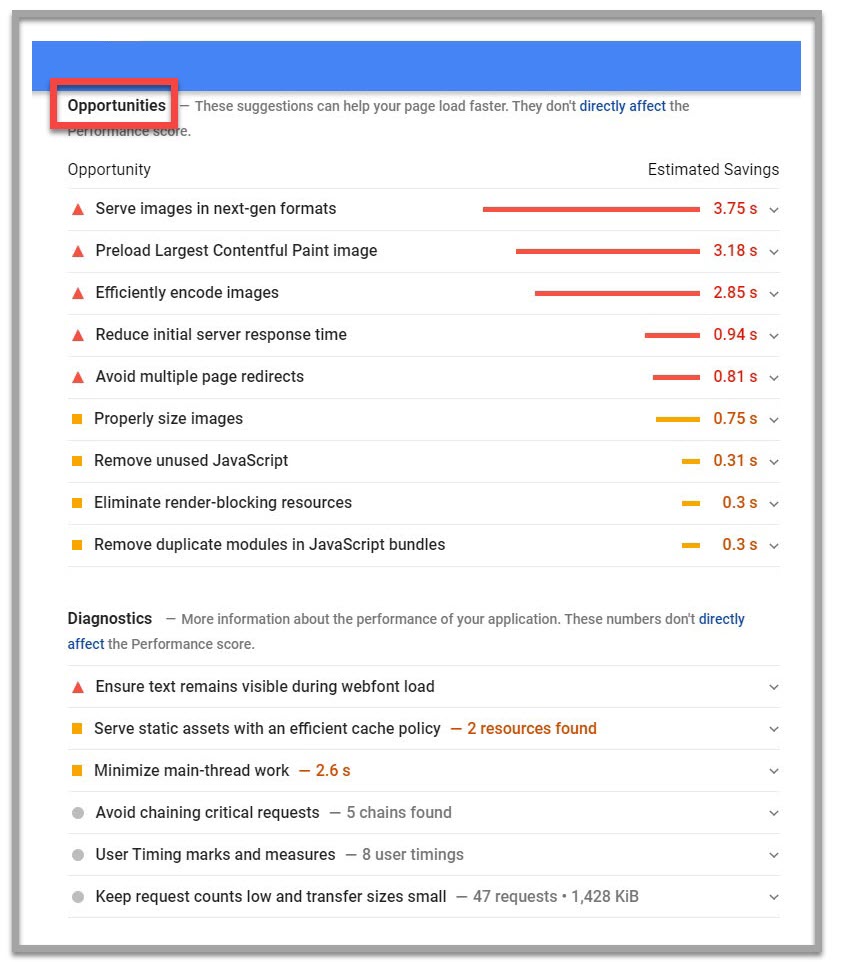
Once there, you will see a list of elements that could be improved on. If you click on the downward-facing arrows, you’ll see a list of elements that need work. Simply follow the recommendations.
Once you’ve worked through the recommendations, retest your URL. You should hopefully see an improvement.
13. Optimize for Mobile Devices
Due to the explosion of mobile usage, it’s now crucial to have a mobile-optimized site.
Simply put, when creating any site think ”mobile-first”.
In other words, you must have a responsive design. What this means is the site will fill the screen and present the information in a clear way no matter what the screen size.
Also, design for small screen sizes and cut out the clutter.
Whenever you change your content, images, or anything else, first test the result in mobile and make sure it looks good for your mobile users.
You can easily do that with Google’s Mobile-Friendly Test tool.
Going From Ghost Town to Thriving Metropolis

Although working on a brand new site might feel like working in a ghost town, setting up your foundations is the first step in welcoming some site visitors.
To help you do that I’ve shown you how to plan your site structure and your content so that your site can more easily gain traffic.
Once you’ve got that dialed in, your next step is to invite your first organic site visitors by targeting low competition keywords. When you have a small steady stream of visitors, you can build from there. There is nothing more exciting than starting with a small stream of visitors only to see it snowball over time.
To help you improve that and set you off on the right foot, I’ve shown you how to boost your site authority with my favorite link-building strategy.
With the right foundations and with patience and diligence, your ghost town will soon look like a thriving metropolis.
]
]

